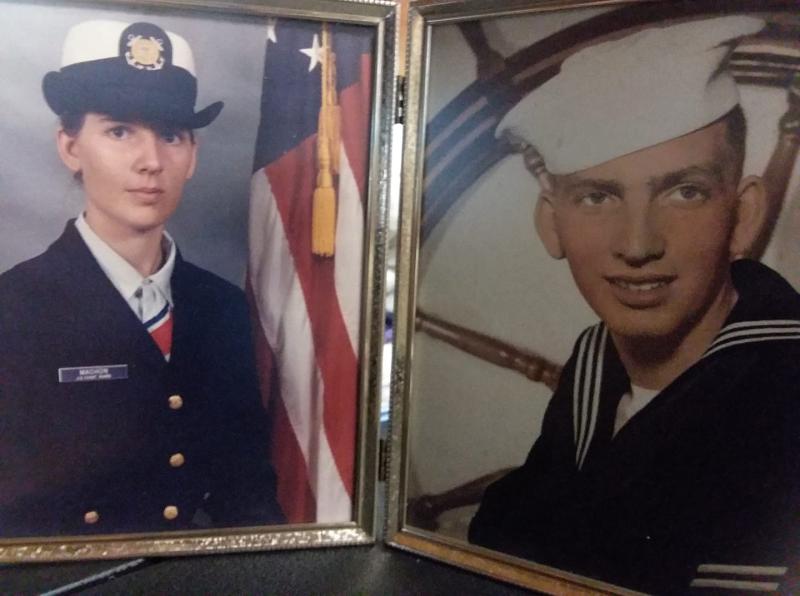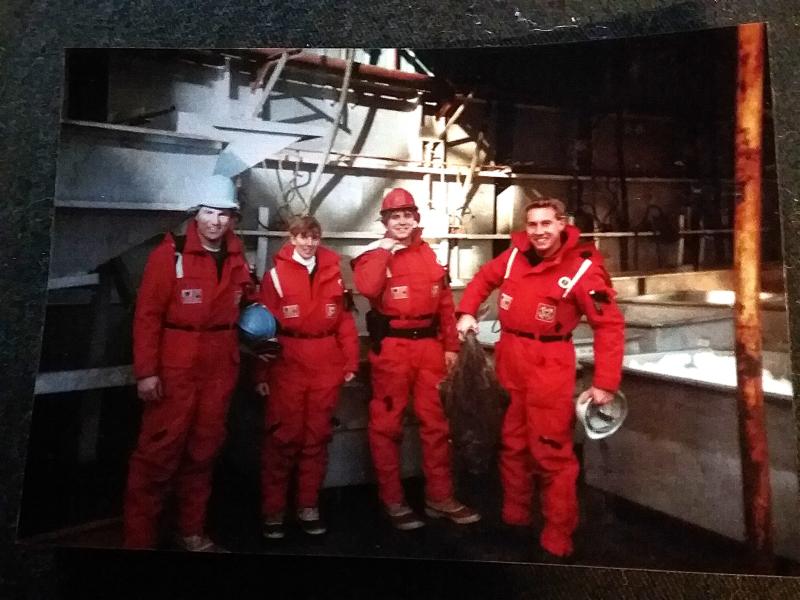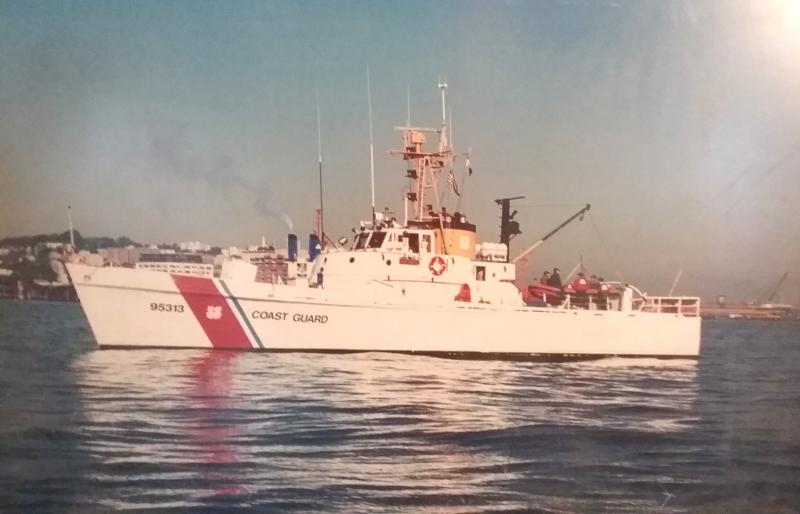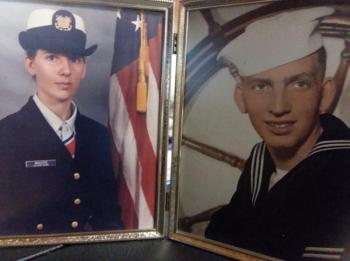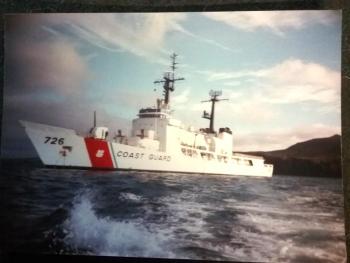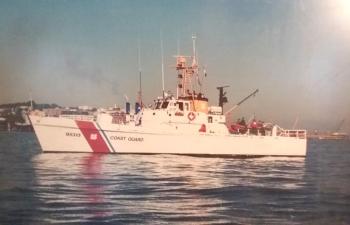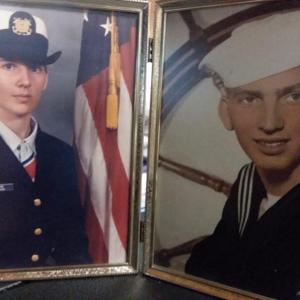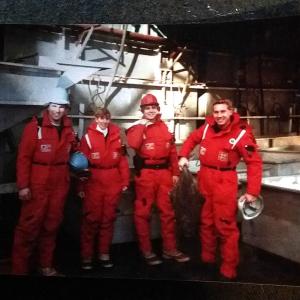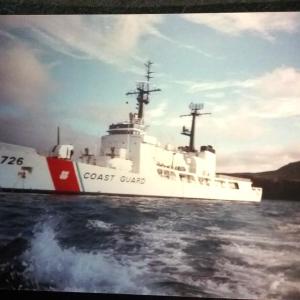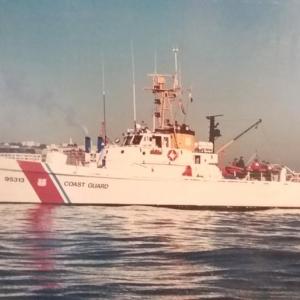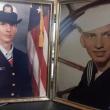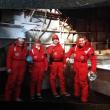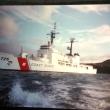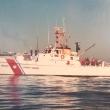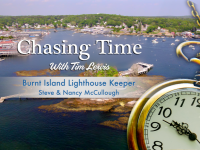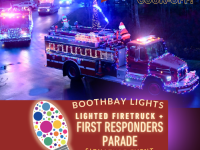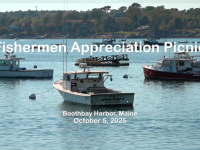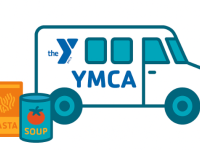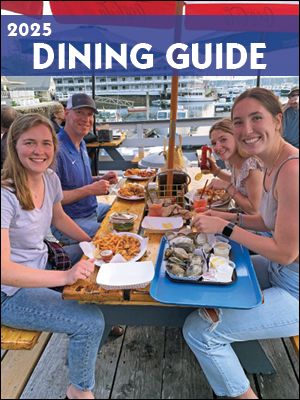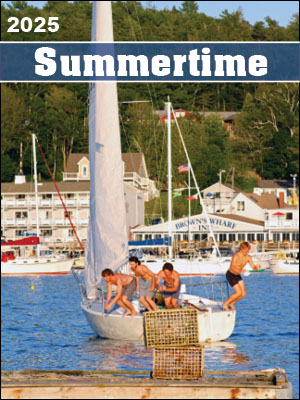Coast Guard Life: Sharon Machon
The 2025 Windjammer Days will shine a spotlight on the dedicated individuals who have served, are serving, or are preparing to serve in one of the most respected branches of the U.S. military: the Coast Guard. From active-duty members and retired veterans to the bright future leaders currently enrolled at the U.S. Coast Guard Academy, we’ll explore their personal stories, their contributions to the community, and the impact they've made on the nation's maritime security. The 63rd annual Boothbay Harbor Windjammer Days will take place on Sunday, June 22 through Saturday, June 28. Please visit boothbayharborwindjammerdays.org for the full schedule of events.
I grew up as a Coast Guard “brat” moving up and down the east coast from Maine to South Carolina. My father, BMCM (Master Chief Boatswain’s Mate) Ira Machon’s final duty station was an 82-foot Patrol Boat out of Point Pleasant Beach, New Jersey where he was officer-in-charge. We got to know many of the small 9-man crew, one of which became my recruiter and another that I worked with later in my career. We had several dependent cruises where families could join the crew on a day trip. I had a feeling of fitting in, belonging when I was onboard, but never really considered that this was a job that I would or could do. After graduating from High School in Charleston, South Carolina, I drifted around doing different jobs in several different states including back home in Maine.
I was living in Fort Myers, Florida working two full-time jobs when one day as I was driving over the bridge, I saw a Coast Guard Patrol Boat. I thought to myself, why couldn’t I join the Coast Guard? I called my dad and told him that I was thinking about joining. He went right to the recruiter’s office, got a bunch of brochures and mailed them to me. A couple of months later, I was raising my right hand and committing to the delayed entry program for entrance to boot camp in October 1986.
My biggest goal when I first entered the Coast Guard was to advance to Master Chief and be Officer-in-Charge of a patrol boat like my dad. Several life decisions, such as having a family and going to college, derailed that dream. I still had a very rewarding career with 10 years of active duty and almost 20 years in the Reserves plus five years as a civilian Search and Rescue Controller in the Portland, Maine Operations Center. For my final seven years in the Coast Guard Reserves, I was lucky enough to serve at my home-town Coast Guard Station, Boothbay Harbor.
After boot camp in Cape May, New Jersey, I was stationed at the small boat station in South Portland, Maine. They said “don’t go home after boot camp, go see the country or someplace else,” but the jobs were extremely limited for females at the time and most were office jobs. So, I chose to come back to Maine. I was at the station for about three weeks when they told me I would be assigned to the 95-foot patrol boat there. I felt so lucky to be able to get this job because at the time, there were only four patrol boats in the whole Coast Guard that had females. It was a great learning experience and solidified my decision to become a Quartermaster (QM).
I spent 15 months onboard while waiting for QM school. My roles included working with the deck force, helmsman, small boat coxswain, in port watch stander, boarding team member, and line handler. I also learned navigation, weapons handling, and the proper techniques for scraping and painting as well as many other cleaning and maintenance tasks.
I attended the twelve-week QM school in Yorktown, Virginia in the spring of 1988. A QM in the Coast Guard has several responsibilities first and foremost as a navigator, bridge watch, and master helmsman. Other responsibilities included being a signalman, search and rescue controller, pollution response, aids to navigation, or whatever each duty station required.
Toward the end of QM school, we got to pick our next assignment from a list of available jobs. As one of only two females in the class there were only two jobs available for us. I picked the job that I thought would help me most in my career, but one of the least desirable jobs. I was assigned to a 378’ High Endurance Cutter named Midgett homeported in Alameda, California. Our schedule was usually about three months underway and two months in port, most of our time was spent in The Bering Sea and The Gulf of Alaska.
When I arrived in Alameda, the ship was underway on patrol. I stayed in Alameda for about three weeks until they made a port call in Homer, Alaska, where I joined them. In addition to my duties as Quartermaster and Signalman, I also got involved with law enforcement and became a member of a boarding team. Most of the boardings I was involved in were in the Bering Sea and were on larger foreign fishing vessels or fish processing ships except one beautiful sunny day when we were in the Gulf of Alaska. I was on a smaller fishing vessel in the pilot house and noticed a placard that identified the vessel as being built at Goudy and Stevens in East Boothbay, Maine. I asked the crew if any of them had ever been there and they all said “no.” During this same boarding, two killer whales were entertaining us by circling the bow of the boat.
My next unit was Group Detroit, Michigan, now called Sector Detroit. My initial assignment was to process Marine Event Permits for an area that covered half of Lake Huron including Saginaw Bay; Lake St. Clair; and half of Lake Erie plus the St Clair and Detroit Rivers. After about a year, I was moved into the Operations Center to be a Search and Rescue Controller. This job entailed search planning plus dispatching boats and helicopters to search for missing mariners; ice rescues; and coordination of US and Canadian vessels for ice breaking and keeping waterways open for shipping traffic. We had eleven small boat stations in our area from Tawas, MI to Fairport, OH and worked closely with these stations during emergency calls. The states of Michigan and Ohio are in the top five states of having the highest number of registered boats in the United States, so we had many opportunities to help mariners in distress.
To me, the most rewarding part of this job was when I received a report of an overdue vessel and was able to tell the family that the missing person had been located which sometimes took minutes, but other times hours, or even a day or longer. Cell phones were not as prevalent as they are today, so finding someone was like taking many pieces of a puzzle and putting them together, including calculating a search area or search patterns for small boats, local law enforcement, and helicopters. When I first started being a search and rescue controller, everything was done on a paper chart, but as the years went by, we transitioned to using computers and programs to help prepare the search areas. Unfortunately, the outcome of these searches was not always a positive experience.
A frustrating part of this job was when children or adults called in a Mayday call over VH-FM Channel 16 when they weren’t in distress or sometimes, not even on a body of water. This was a common occurrence during boat shows, but we still conducted searches for a vessel in distress. Equipment evolved over the years and now direction-finding equipment can help pinpoint a location of these hoax calls.
After about five years of sitting on shore as a Search and Rescue Controller, I was finally assigned a Patrol boat out of Mayport, Florida and underway again. I was in charge of the Operations Department as a First-Class Quartermaster. Our missions included Law Enforcement, search and rescue, and migrant interdiction. One of the most memorable experiences that I had while onboard was watching a space shuttle launch from Cape Canaveral, Florida. The best part of being on a ship is the comradery and friendships that are created with shipmates.
I was given the opportunity to move back to Maine and work at the Group Portland, now called Sector Northern New England, Operations Center. I worked there as a Reservist, Active Duty, and Civilian Search and Rescue Controller. Our area of operation included the coasts of Maine and New Hampshire plus Lake Champlain with Station Burlington, Vermont. It was also during this time that the Coast Guard eliminated the rate of Quartermaster. We were given the option to do another rate (job), so I decided to become a Boatswains Mate, which gave me the eligibility to work at a small boat station. I jumped on the opportunity to transfer to Station Boothbay Harbor where I was put in charge of the Reserve unit.
The Coast Guard has always been a part of my life and I am thankful that I have had the opportunity to serve. I met my husband, Robert Ames while stationed in Portland and we have been able to raise our four children here in the Boothbay region. I was also able to complete a college degree using the Military Tuition Assistance Program which resulted in my current job with the Federal government, Social Security Administration.
The Coast Guard is a small service where the responsibilities of one person can be equal to five or more different jobs in other services or in the civilian world. One day in the Coast Guard can consist of excitement, boredom, learning, teaching, supervising, being supervised, high activity or low activity. There are so many opportunities and the more you put into it, the more you get out.

